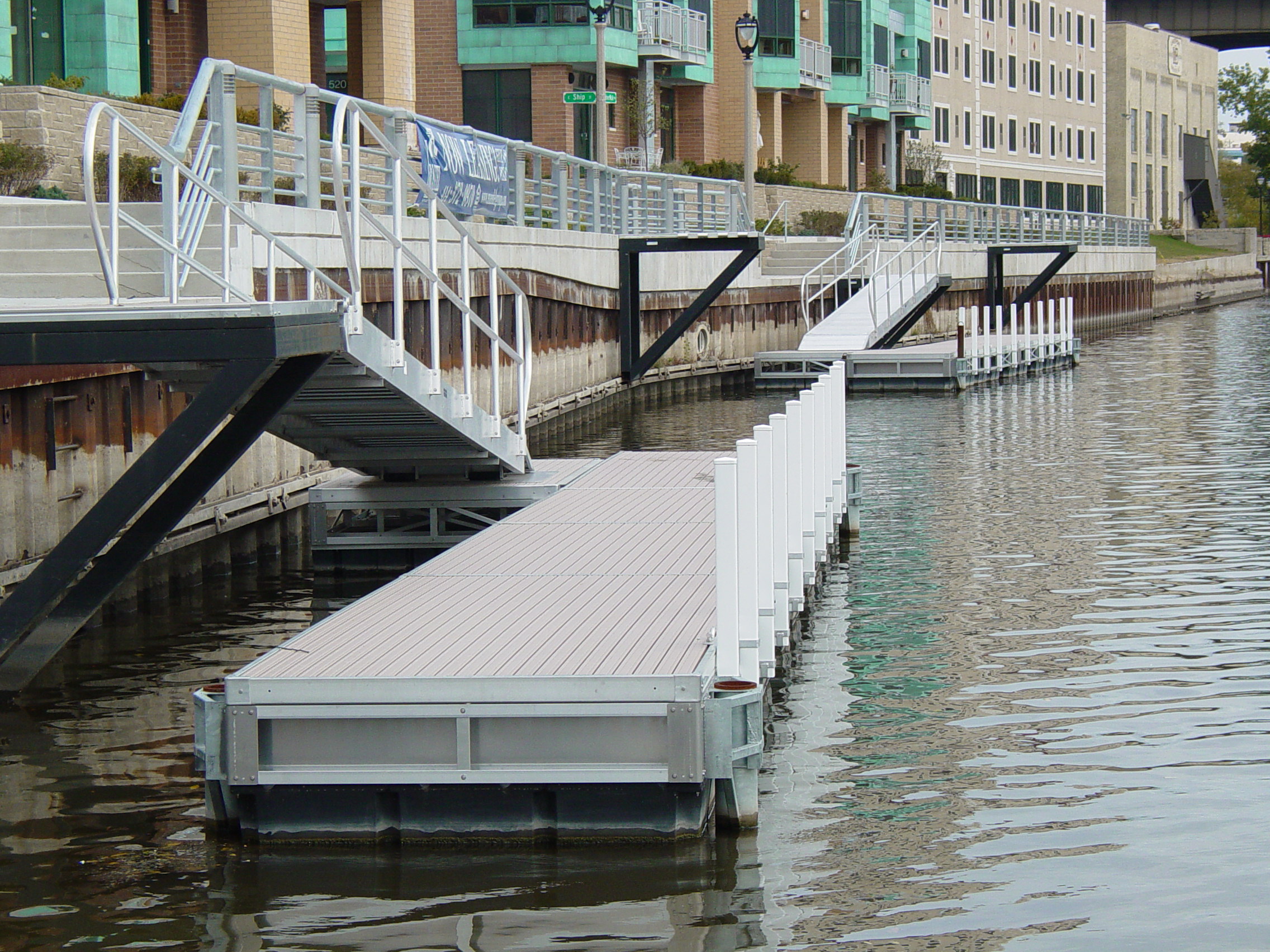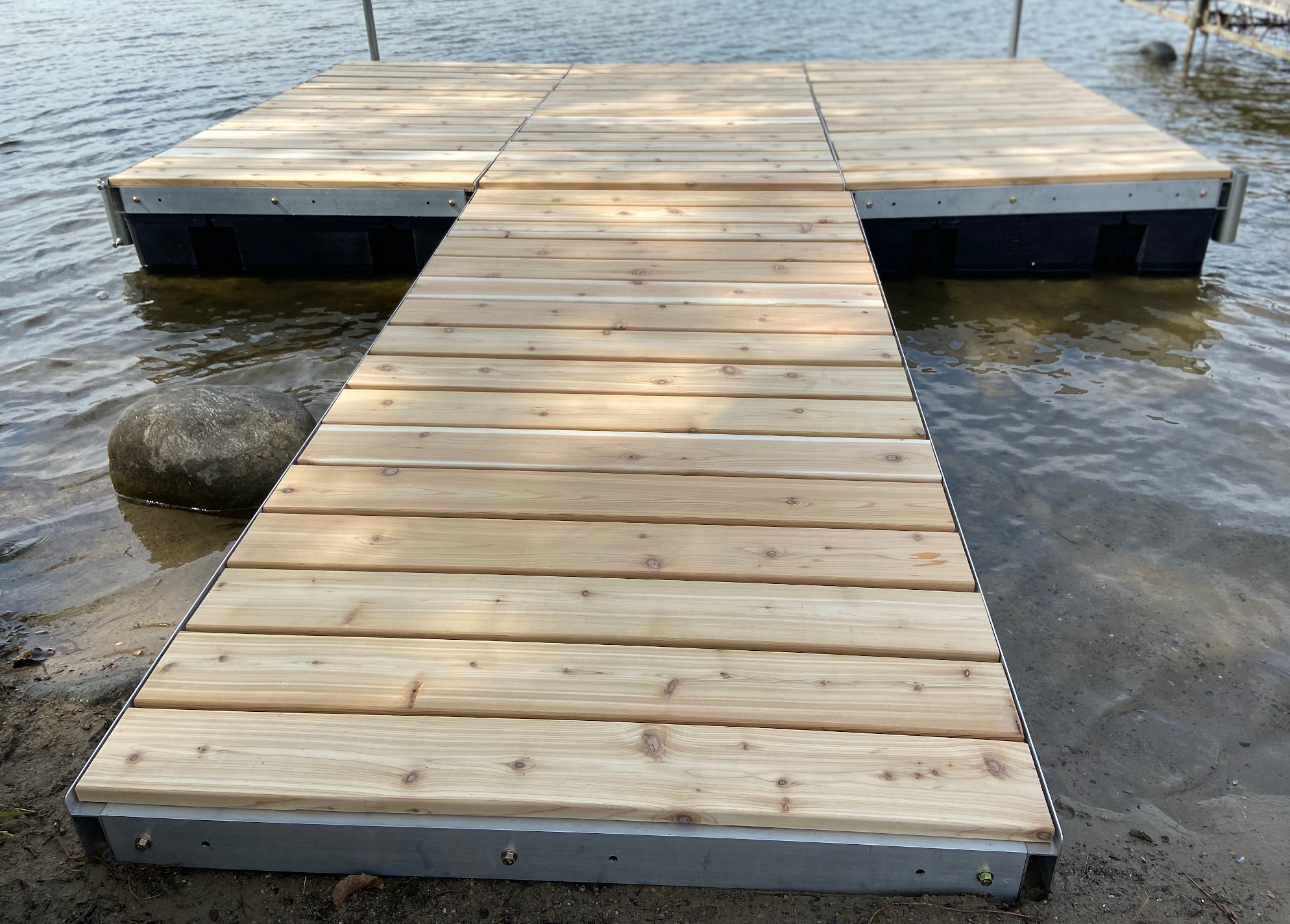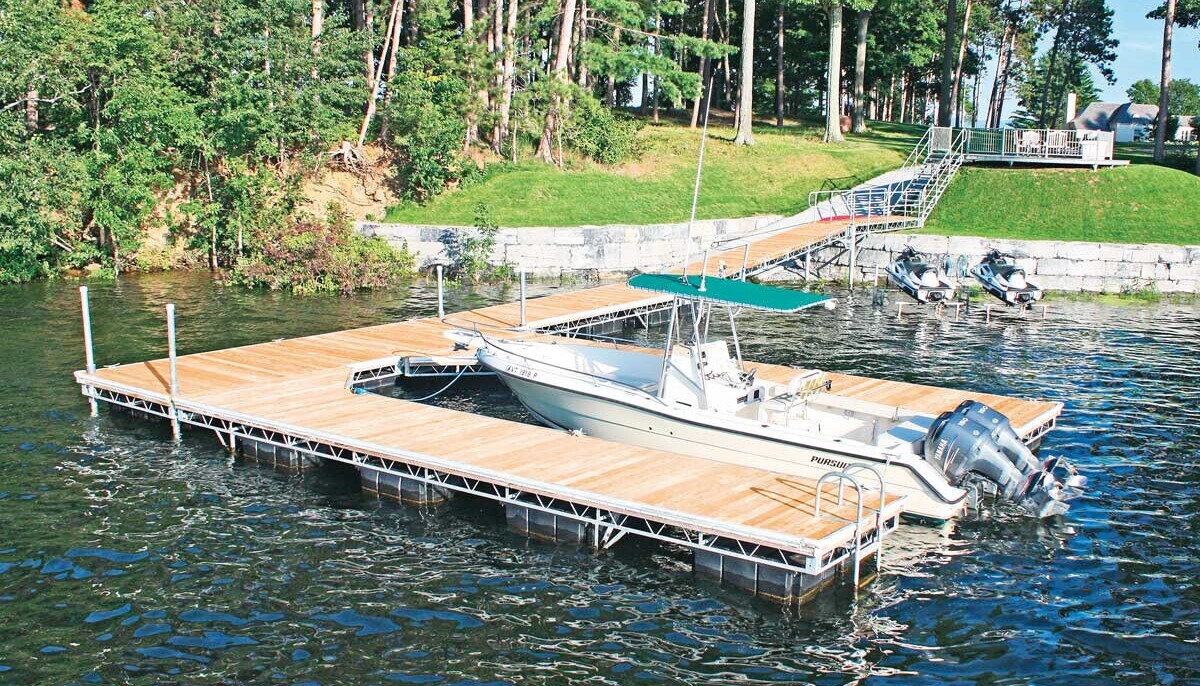Upgrade Your Waterside With Long Lasting Floating Docks
Updating your waterfront with long lasting floating docks can significantly enhance both capability and aesthetics, giving a flexible option for various water activities. These frameworks are developed to adjust to ever-changing water levels, making sure security and access throughout the periods. With a variety of materials available, consisting of low-maintenance choices and traditional wood, choosing the right dock can complement your personal style and fulfill functional demands. Understanding the subtleties of installment and upkeep is critical for ensuring long life and efficiency. When making this financial investment?, what aspects should you consider.
Benefits of Floating Docks
Floating docks deal a multitude of benefits that enhance their allure for various maritime applications. Unlike typical set docks, floating docks rise and loss with the tide, making sure consistent accessibility for watercrafts and boat no matter of ecological problems.
Additionally, floating docks are simpler to relocate and set up, providing flexibility for seasonal or temporary usage. Their modular design permits for modification to fit certain needs, whether for private marinas, household waterfronts, or business applications.
Moreover, floating docks produce minimal disturbance to the aquatic environment, maintaining neighborhood ecosystems and decreasing the probability of erosion. They also provide enhanced safety and stability for individuals, as their buoyant nature offers an extra forgiving surface area than inflexible structures.
Moreover, floating docks can promote a diverse series of activities, such as fishing, swimming, and entertainment boating, making them a valuable possession for waterside advancement. Their versatility and functionality make floating docks a favored choice for a range of maritime jobs.
Selecting the Right Products
Choosing appropriate materials for floating docks is crucial to their durability, efficiency, and general efficiency. When choosing products, take into consideration variables such as ecological direct exposure, upkeep requirements, and architectural integrity. Common products consist of wood, plastic, light weight aluminum, and composite choices, each offering distinctive advantages and negative aspects.
Timber, while aesthetically pleasing, calls for regular maintenance to prevent rot and decay. Pressure-treated wood can boost toughness, but it may still catch water damages in time. Plastic floats, usually made from high-density polyethylene, are resistant to corrosion and need minimal upkeep, making them an appealing option for low-maintenance applications.
Aluminum is another viable alternative, recognized for its strength and light-weight homes. It is immune to rust and can endure harsh weather condition problems, although it may be extra costly than various other products. Compound products integrate the most effective qualities of timber and plastic, offering a durable and low-maintenance choice that mimics the look of wood without the connected disadvantages.
Ultimately, the choice of material should line up with the intended usage, ecological considerations, and budget plan constraints, making sure a resilient and useful floating dock that meets your particular demands.
Installment Process Review
The successful installation of a drifting dock counts on cautious preparation and execution, ensuring that it runs efficiently in its desired environment. The primary step involves assessing website conditions, including water depth, shoreline functions, and dominating weather patterns, which will notify the dock style and anchoring system.
Adhering to the website assessment, the next phase is to prepare the floating dock parts. This consists of putting together the framework, safeguarding drifts, and affixing any kind of necessary hardware. It is important to make certain that all links are durable and waterproof to withstand marine conditions.
Once the dock is assembled, the installation process commences with positioning the dock in the water. This can involve a crane or other lifting devices, specifically for bigger frameworks. Correct placement is essential i loved this for functionality and safety and security.

Maintenance Tips for Longevity
Routine upkeep is vital for guaranteeing the long life and optimal efficiency of a floating dock. To accomplish this, start with routine examinations at least two times a year, focusing on the stability of the dock's structure, including the flotation protection devices and attaching hardware. Search why not try these out for indicators of deterioration, damage, or wear, and attend to any kind of issues immediately to prevent additional degeneration.
Cleaning is one more important aspect of maintenance. Eliminate particles, algae, and barnacles from the dock's surface area to avoid slippery problems and keep visual appeal. Use a soft brush and a light cleaning agent to avoid damaging the dock's materials.
Furthermore, make certain that the dock is properly anchored and secured to endure seasonal modifications in water degrees and climate condition. Examine the anchoring system for security and make changes as essential.
Enhancing Your Outdoor Visual
To create an aesthetically appealing outdoor room, incorporating a drifting dock can significantly enhance the overall aesthetic of your waterfront home. Floating docks are not only functional but can additionally offer as a striking focal factor that enhances the all-natural surroundings - dock company. Readily available in numerous materials and designs, these docks can be tailored to match your building's building style and landscape
The addition of decorative components, such as incorporated lighting or stylish barriers, additionally elevates the dock's aesthetic charm. Consider making use of all-natural wood finishes, which blend effortlessly with the environment, or choosing modern products like aluminum or composite outdoor decking that provide a smooth, contemporary look.
Purposefully putting planters or seating areas on or around the dock can produce inviting rooms that motivate leisure and satisfaction of waterfront sights. Additionally, including colors and appearances that harmonize with your landscape will certainly create a natural aesthetic throughout your exterior area.

Conclusion

Upgrading your waterside with sturdy floating docks can dramatically enhance both performance and aesthetic appeals, giving a versatile option for numerous water activities. Unlike conventional set docks, floating docks increase and fall with the tide, making sure regular accessibility for boats and boat no matter of environmental conditions.Picking suitable materials for floating docks is essential to their longevity, performance, and overall efficiency.When the dock is constructed, the installment process commences with positioning the dock in the water.In summary, floating docks offer various advantages, including versatility to water degree modifications and a selection of product alternatives.